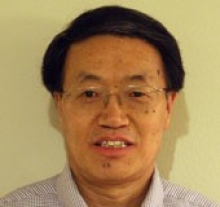ChEMS Seminar: In-situ S/TEM Diagnosis-Guided Designing of Energy Storage Materials

Environmental Molecular Sciences Laboratory
Pacific Northwest National Laboratory, Richland, WA
Abstract: Over the last decades, we have witnessed tremendous progress in the development of aberration-corrected scanning/transmission electron microscopy. As a result of this development, imaging and spectroscopying of materials at atomic scale appear to be a routine practice. The question now becomes how do we extend these methodologies to analyze material process under reaction or operating condition, typically such as real-time observation of catalytic process, oxidation/reduction, charge and mass transport during battery operation? Approaches that are employed to provide in-situ observation of chemical reactions and microstructural evolution include, but are not limited to, the use of differential pumping technologies, the modification of sample holders to enable the application of an external stimulus such as an electromagnetic field or stress, using thin membrane-closed cells for experiments involving liquids or gases and use of liquid with low vapor pressure. In view of these developments, this presentation will focus on in-situ techniques that were developed for probing into the structural and chemical information of energy storage materials, highlighting direct observation of structural evolution, phase transformation and their correlation with mass and charge transport, providing insights as how active materials fade during the cyclic charging and discharging of a battery. In perspective, challenges and possible direction for further development of in-situ S/TEM imaging and spectroscopic methods for both functional and structural materials also will be discussed.
Bio: Chongmin Wang received his bachelor's and master's degrees in physics from Lanzhou University in China and his doctorate in materials science and engineering from University of Leeds, UK. He worked at Max-Planck Institute for Metal Research in Stuttgart, Germany as an Alexander von Humboldt Research Fellow, at the National Institute for Materials Science in Japan, and at Lehigh University, focusing on atomic-level study of grain boundary structure and chemistry using S/TEM. He is currently a chief scientist at Pacific Northwest National Laboratory, and his research interests include state-of-the-art S/TEM imaging and spectroscopy and their application to materials characterization, especially in situ and operando S/TEM techniques for energy materials application. He is one of the pioneers on in-situ TEM technique for rechargeable battery research, which has earned him prestigious honors, including the 2012 Microscopy Today Innovation Award; 2016 MRS Innovation in Materials Characterization Award (shared with Frances Ross of IBM T. J. Waterson Research Center and Niels de Jonge of Leibniz Institute for New Materials, Germany); 2015 Journal of Materials Research (JMR) Paper of the Year Award; 2017 PNNL Laboratory Director’s Award for Exceptional Scientific Achievement; and 2017 and 2013 PNNL Pathway to Excellence Award. He also is the recipient of the R&D100 Award, Rowland Snow Award from the American Ceramic Society, Outstanding Invention Award from the Japanese Science and Education Committee and the PNNL Exceptional Contribution Award. Chongmin has published 360 journal papers, with a total citation of 16000 and an H-index of 65, and he has delivered 60 invited talks. He is serving as the principal editor of the Journal of Materials Research and is a fellow of the Materials Research Society.
Host: Xiaoqing Pan
